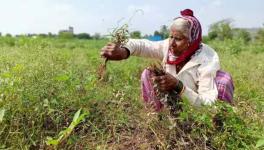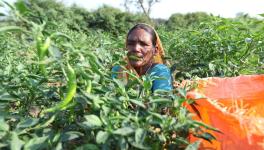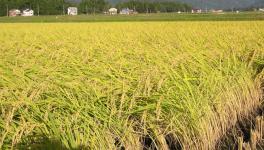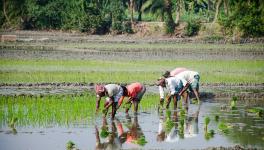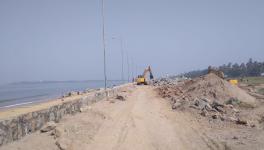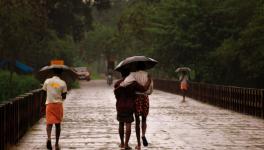Nearly Half of Maharashtra to Face Severe Water Crisis in 2018-19
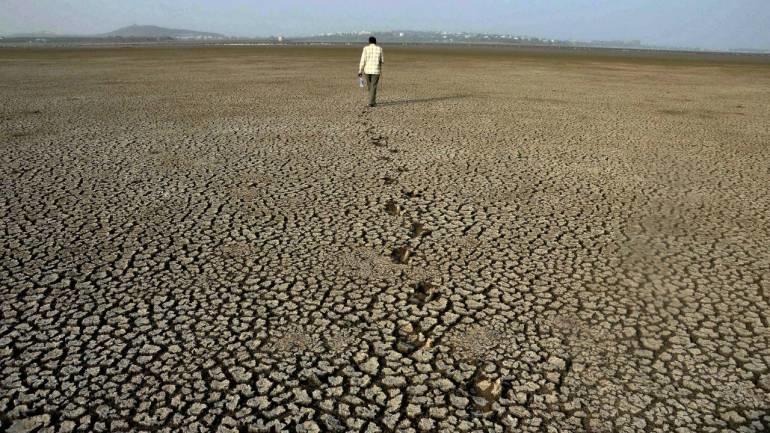
After running in circles over “drought like situation” in Maharashtra, according to the latest study conducted by the state’s Groundwater Survey and Development Agency (GSDA), nearly 71 per cent of the state shows a drop of more than a meter in groundwater level in September, as compared to a five-year average.
As many as 170 tehsils in 13 districts of Maharashtra have received deficient rainfall this year. The India Meteorological Department (IMD) southwest monsoon rainfall data shows that against a normal rainfall of 682.9 mm, the Marathwada region received 534.6 mm rainfall between June and September months, thus, recording a rainfall deficiency of 22 per cent.
According to official figures, the Aurangabad (in Marathwada region) and Nashik divisions received the lowest rainfall this year and have just about 27.59 per cent and 64.89 per cent of water, respectively, stored in dams there.
Also Read: The Manual for Drought Management, 2016 Won’t Let North Karnataka Be Declared Drought-hit
The other regions of the state have reported deficient rainfall too. For instance, Madhya Maharashtra and Vidarbha regions had 9 per cent and 8 percent rainfall deficiency respectively, till the end of southwest monsoon season. At the state level, against a normal monsoon rainfall of 1007.3 mm, Maharashtra received 925.8 mm, thus recording rainfall deficiency of minus 8 percent.
Mr. R. R. Kelkar, a meteorological scientist and former director general of IMD has said that these cumulative rainfall figures are deceptive, as they do not reflect the ground reality. Even within a district, there is huge rainfall variation, which impacts the soil moisture, crop growth and severity of the drought.
The deficiency in rainfall has led to water depletion in various water sources including groundwater, surface water and soil moisture. The GSDA study has forecast that 11,487 villages in 167 tehsils will face water scarcity in 2018-19, which means that 47 per cent of the state (the state has 353 tehsils) will face a severe water crisis. Of the 11,487 villages in Maharashtra, the study has found that groundwater levels have depleted by over 3 metres in 2,941 villages (114 tehsils).
According to the agency, these regions will face water scarcity from October itself, raising immediate concerns for the government, while the other vulnerable areas will feel the heat from January.
Farmers to be Worst-hit
Speaking with Newsclick, Ajit Navale, Maharashtra state General Secretary of All India Kisan Sabha said, “This will force the ‘Kisans’ (farmers) to migrate towards bigger cities in search of drinking water and means to earn livelihood, abandoning their cattle behind just to survive.”
He also said that the situation has worsened because the centre has changed the parameters for drought assessment. The manual for drought management of 2016, unlike the manual of 2009, not only has made the parameters to declare drought complex and stringent, but has also limited the Centre’s scope to offer financial assistance to states in the eventuality of a drought.
He further said that the relief farmers got under karza maafi (loan waiver) was much lower than promised. “The drought will force the farmers to take new loans and these loans are not going to be taken from banks. They are going to be taken from big Zamindars (landlords) and Sahukars (moneylenders),” he said. With the state’s inefficiency to provide aid and crop relief to farmers in situations like these, farmers are often forced to commit suicide under severe debt. “This is going to be a bigger crisis,” he went on to add.
Government’s Jalyukt Shivar Scheme, a Farce?
The study has set off alarm bells for Chief Minister Devendra Fadnavis, who has been quoted saying that only 180 of the total 350 taluks in the state faced a “drought-like” situation. In 2014, the Bharatiya Janata Party government in Maharashtra had launched its much vaunted water conservation scheme Jalyukt Shivar, which means water-filled land. The scheme sought to bring all central and state water conservation schemes under one umbrella with the aim of making Maharashtra drought-free by 2019, but following the recent GSDA report, Fadnavis-led BJP government in Maharashtra is facing strong political backlash over this scheme being a farce and riddled with corruption.
Commenting on the scheme, Ajit Navale said, “It is a highly self-congratulatory idea if the government believes that the scheme has brought in any benefit. There is no truth in this scheme. The money allocated towards this scheme has gone into the pockets of contractors and ministers.”
Also Read: Plight of North Karnataka Farmers, Silent State Government and Politics of BJP
He also mentioned that this scheme was implemented for water conservation and drought-proofing the state which also incorporates retaining water and recharging water resources for times like these when there has been deficient rainfall as compared to last year. “It is for everybody to witness what a sham the Shivar scheme is. Under this scheme, the groundwater levels should have increased. It should have been able to recharge the water resources and retained water from last year’s monsoon but it hasn’t,” Navale said.
The Congress and the Nationalist Congress Party (NCP) in the Opposition too have questioned the implementation of Jalyukt Shivar, with the Congress on Friday seeking a judicial probe in all the work contracts that have been awarded so far.
Rebutting these claims, Maharashtra’s water conservation minister Ram Shinde has attributed the measures taken under Jalyukt Shivar for the “rise in water levels in 101 tehsils”. While admitting to the highly concerning drop in groundwater levels this year, Shinde has argued that the state has seen a deficient monsoon this time, which usually results in “more extraction of water”. Rainfall was over 30 per cent deficient in 136 tehsils this monsoon, data shows.
Situation Worsened by Government’s Apathy
The GSDA has cited lack of proper water management, uncontrolled extraction of water, water wastage through flow irrigation and damage to ground water aquifers as the main reason for plummeting groundwater levels even as Maharashtra has witnessed rainfall deficit in 2018-19 and 38 per cent area of the state recorded an over 30 per cent deficit, compared with the normal average.
Further, in it’s report, the GSDA has found that groundwater depletion has been the highest in the drought-prone Marathwada and Vidharbha belts. It found that 58 tehsils (4,385 villages) in Marathwada saw more than a metre drop in groundwater levels making it the worst-hit region. While, 42 tehsils (2,554 villages) fall under the same red zone in the Vidharbha region.
As of October 10, the Manjara Dam in Marathwada- which supplies water to nearly 1400 units in Latur, and considered as the lifeline for Latur and Beed districts, has touched the dead storage mark while the Totladoh Dam located in Nagpur has receded to a 23 per cent watermark.
While all these indicators should have hurried the government to declare the state “drought-hit” and not “drought-like”, farmers are set to bear the brunt of the government’s untimely response.
Had the government declared the state drought-hit, it would have forced the cash-strapped government to provide relief measures like supply of drinking water by tankers and camps for cattle.
With more than nine months to go for the next monsoon, Maharashtra is glaring at a very tough time this season.
Get the latest reports & analysis with people's perspective on Protests, movements & deep analytical videos, discussions of the current affairs in your Telegram app. Subscribe to NewsClick's Telegram channel & get Real-Time updates on stories, as they get published on our website.












